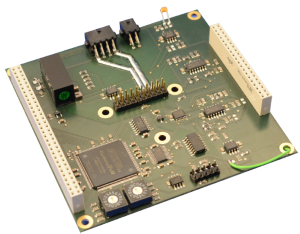QUANTUS IV - MAIUS

| Led by: | Prof. Dr.-Ing. Holger Blume |
| Team: | Dipl.-Ing. Christian Spindeldreier |
| Year: | 2014 |
| Funding: | "National Space Program" of the Federal Ministry for Economic Affairs and Energy (BMWi) |
| Duration: | August 2014 - December 2021 |
| Is Finished: | yes |
Project Description
The aim of the project QUANTUS IV – MAIUS, funded by the German Aerospace Center (DLR) national space program, is to test the universality of free fall through quantum mechanics testing. The project uses the differential measurement method of the relative acceleration of two atomic ensembles, called Bose-Einstein Condensate (BEC), using atom interferometry. As the sensitivity of atomic interferometers is proportional to the squared free fall time, the experiments will be performed under microgravity, i.e. close to complete weightlessnesss. During the previous projects QUANTUS I – III atom interferometry experiments were performed using the free fall tower at the Center of Applied Space Technology and Microgravity (ZARM) in Bremen, where a maximum free fall period of nine seconds was reached. In the QUANTUS IV – MAIUS project these experiments will be transferred to a sounding rocket platform and extended for atom interferometry in space. Within the project, two sounding rocket missions MAIUS-II and MAIUS-III will be launched, allowing atom interferometry in microgravity for approximately six minutes.
To enable the experiments transfer to the sounding rocket platform strong downscaling and high degrees of automation essential. To fulfill this, the Institute of Microelectronic Systems is working on optimizing of the automated control and evaluation units of the experiment by focusing on high integration, as well as the acceleration of computational extensive algorithms using FPGAs.
Project partner
- Center of Applied Space Technology and Microgravity (ZARM), University Bremen
- Institut für Quantenoptik (IQO), Leibniz University Hannover
- Institute of Microelectronic Systems (IMS), Leibniz University Hannover
- AG Optical Metrology, Humboldt University Berlin
- Ferdinand-Braun Institut für Höchstfrequenztechnik (FBH), Berlin
- Institute of Physics, Johannes Gutenberg University Mainz
- Mobile Rocket Base (MORABA), German Aerospace Center (DLR)
Picture: S.Seidel, Institut für Quantenoptik, Leibniz University Hannover


